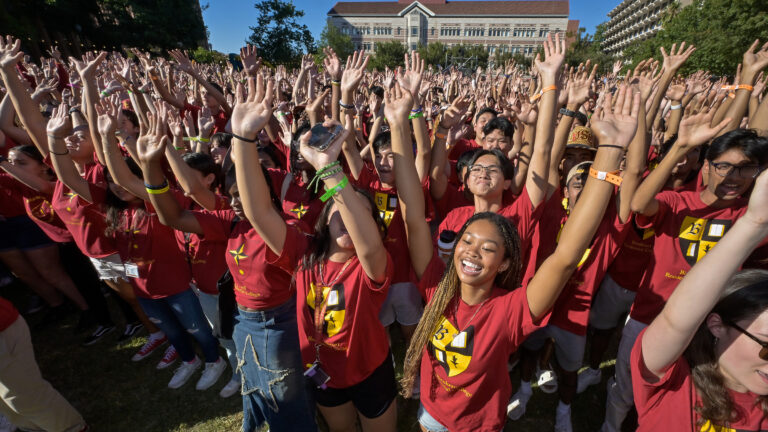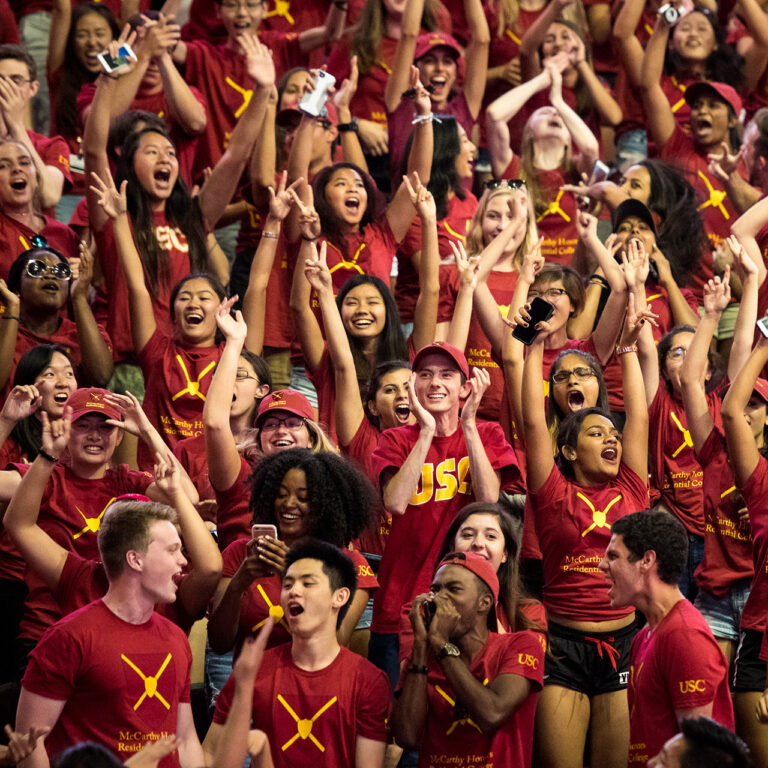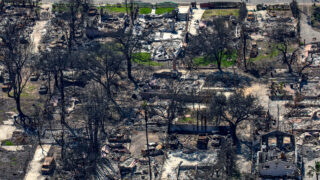Leading the Way in AI
In institutes, labs and classrooms across the university, USC is setting the pace in artificial intelligence — its development, implementation and potential. Take a look back at five decades of innovations that established USC as a leader in the field — and look ahead at what’s next.
Top Headlines
As the national holiday honoring the civil rights leader approaches, learn about King’s visits to USC and its surrounding neighborhoods in the late ’50s and ’60s.
Underground heat and sediment patterns control how earthquakes behave along one of the most dangerous faults in the eastern Mediterranean.
USC officially welcomes new undergraduate, graduate and transfer students with inspiring words and a heavy dose of Trojan tradition.
“I was trying to get to know a place through its remains,” says one student.
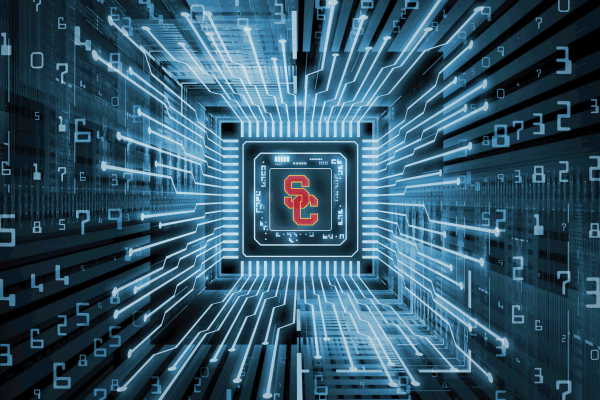
The Driver of Tomorrow’s Tech is Here Today
Not so long ago, artificial intelligence was the stuff of science fiction. Today it’s affecting our lives in countless ways — and USC is leading the revolution.
AI Leadership — from Research and Implementation to Ethics
USC’s unique interdisciplinary approach to artificial intelligence brings together expertise from myriad areas, with students at the center of it all.
Urban AI UnLocked project to promote equitable adoption of AI in urban K-12 schools nationwide
The EdPolicy Hub at USC Rossier will launch the project with $200,000 in funding from Google.org.
USC Gould, top U.S. law firm launch Law+AI Initiative
The venture teams USC’s law school with Akerman LLP’s nationally recognized practicing lawyers to facilitate global knowledge sharing and influence cross-market standards for AI adoption.
Finding home in Oz: USC student helps transform a classic with AI
“Experience of a lifetime”: Suvaditya Mukherjee helps bring The Wizard of Oz to the Las Vegas Sphere using cutting-edge artificial intelligence.
In the AI Boom, a Room of Their Own
FoundHer House, an all-female hacker house started by two students at the USC Iovine and Young Academy, aims to accelerate the growth of female-led, AI-driven tech startups.
How USC is future-proofing drama education: A conversation with Dean Emily Roxworthy
Among the topics on the dean’s agenda: How the USC School of Dramatic Arts’ curriculum cultivates essential human capabilities that will become increasingly valuable as AI transforms entertainment.
Researchers use AI to study community resilience in the wake of L.A. wildfires
Two interconnected research collaborations spanning four USC schools are combining social science with machine learning to study the positive effects of community resilience.
Your AI questions, answered by USC’s librarians
As artificial intelligence transforms research and learning, the USC Libraries help students and scholars use it wisely — and think critically about its impact.
Shaping the next generation of AI leaders
USC Bovard College’s new master’s in applied analytics degree in built with AI at its core. It launches in the spring.
Community, Powered by USC
From civic dialogue and youth learning to data on affordability and new partnerships, these stories show how Trojans turn knowledge into impactful action across Los Angeles and beyond.
JEP’s Ripple Effect, Service That Spans Generations
USC Dornsife’s Joint Educational Project is creating a multigenerational ripple effect, with local families and Trojan volunteers returning to JEP across decades. The story highlights JEP House and programs such as WonderKids and Little Yoginis at the James A. Foshay Learning Center near USC.

New Funding Advances Equitable AI Integration in K–12 Schools
USC Rossier’s EdPolicy Hub received $200,000 from Google.org to launch Urban AI UnLocked, a research and capacity-building project focused on equitable AI adoption in urban K–12 schools. The project includes a national survey and engagement with educators, administrators and families.

Across the Aisle, A Practical Model for Civil Dialogue
USC’s Center for the Political Future promotes respectful, fact-based dialogue and civic participation across differences. Founded in 2018 by Bob Shrum and Mike Murphy, the center connects academic life with practical politics and prepares students to engage diverse viewpoints with integrity and empathy.

Public Exchange Expands to Washington University in St. Louis
USC and Washington University in St. Louis are expanding Public Exchange, a model created at USC in 2020 to connect academic research with city leaders, nonprofits and businesses tackling urgent community issues. The partnership will support solutions-focused collaborations on challenges such as disaster recovery, food insecurity and climate resilience.

Young Angelenos Revisit Bunker Hill’s Lost History Through Zines
Funded by USC’s Arts in Action, the program brought together young people to explore the history of Bunker Hill, a vibrant Los Angeles neighborhood razed by the Community Redevelopment Agency in the 1950s and 1960s. Led by Dr. Meredith Drake Reitan with USC Libraries staff and Los Angeles Public Library collaborators, students recruited through USC and LAPL, including participants from USC’s Neighborhood Academic Initiative, created zines that bring this history back into public view.

LABarometer Tracks How L.A. Residents Experience Livability and Affordability
LABarometer released new results from its Livability and Affordability survey, tracking Los Angeles County residents’ well-being since 2019, including housing, safety, access to services and participation in public life. The most recent wave was fielded from late August through mid-November 2025 and is administered to a probability-based panel of nearly 2,000 adults in English and Spanish.

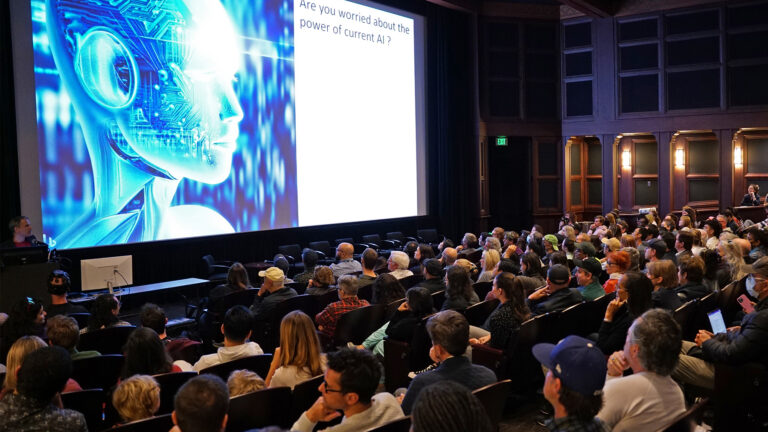
Spotlight: USC School of Cinematic Arts
The USC School of Cinematic Arts is the nation’s premier institution for film, television and interactive media education. With world-renowned faculty, cutting-edge facilities, and deep ties to the entertainment industry, USC’s film school empowers students and alumni to shape the future of storytelling across platforms.
